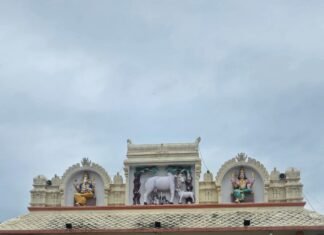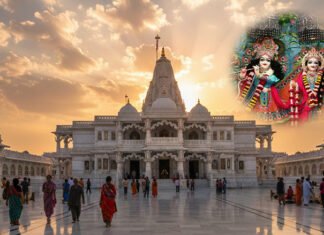Introduction:
Nestled in the picturesque landscapes of Khammam District in Telangana, the Kinnerasani Dam is a captivating blend of engineering marvel and natural beauty. Built across the serene Kinnerasani River, this dam stands as a vital lifeline for the region, playing a crucial role in irrigation and power generation. Inaugurated in 1966 by then Prime Minister Indira Gandhi, the Kinnerasani Dam has been an enduring symbol of progress and prosperity.
Surrounded by lush forests and majestic hills, the dam forms the heart of the Kinnerasani Wildlife Sanctuary, a haven for diverse wildlife and a paradise for nature lovers. With its expansive reservoir and rich biodiversity, the Kinnerasani Dam offers visitors a chance to explore its scenic splendor and experience its ecological significance firsthand. Whether you’re drawn by its historical significance, the beauty of its surroundings, or the opportunity to witness a variety of wildlife, the Kinnerasani Dam promises a memorable adventure in the heart of Telangana.
Historical and Engineering Significance:
Constructed in 1966 for Rs. 558 lakhs, the Kinnerasani Dam was inaugurated by then Prime Minister Indira Gandhi. This infrastructure marvel was built to cater to agricultural irrigation needs and to provide a steady water supply for the Kothagudem Thermal Power Station (KTPS) in Palvoncha. With a full reservoir capacity of 233 million cubic meters and a full reservoir level reaching up to 407 feet, the dam plays a pivotal role in regional water management.
Also read: Ultimate Guide of Nagarjuna Sagar Dam and Boating Adventures:
Geographic and Ecological Highlights:
The Kinnerasani Dam is strategically located in the Yanamboil village of Palvoncha Mandal, within the Khammam District. The surrounding area is characterized by dense forests and majestic hills, which form part of the larger Dandakaranya forest region. The reservoir itself spans an impressive 635 square kilometers, which has been designated as the Kinnerasani Wildlife Sanctuary.
The sanctuary is a thriving ecosystem, home to a diverse array of wildlife. Visitors to the area see various species such as Cheetal (spotted deer), Chinkara (Indian gazelle), Wild Boars, Chousinghas (four-horned antelopes), Sambar, Gaurs (Indian bison), Hyenas, Jackals, Sloth Bears, Tigers, Panthers, and Black Bucks. Birdwatchers will find delight in the sanctuary’s avian inhabitants; first, there are Peafowl, and then Quails, Partridges, and Teals. Moreover, Nuktas and Spoonbills add to the diversity, and, what’s more, Jungle Fowl and Doves equally important, create a rich experience.
Finally, the diverse array of bird species in the sanctuary collectively creates a haven for bird enthusiasts. Besides these species, which include Peafowl, Quails, and Partridges, the sanctuary also hosts a variety of other avian inhabitants such as Teals and Spoonbills.
Moreover, the presence of these birds enhances the sanctuary’s appeal, making it an exceptional destination for birdwatchers.
Fauna and Flora:
The sanctuary’s diverse flora and fauna contribute to its reputation as a haven for wildlife enthusiasts and nature lovers. The Kinnerasani River, which dissects the sanctuary, adds to its charm and ecological importance, eventually joining the mighty Godavari River. The reservoir is, first and foremost, home to breeding populations of crocodiles. Furthermore, Kinnerasani Island within the reservoir provides a unique environment for these reptiles. In addition, this island is an essential habitat, offering not only a sanctuary but also a thriving ecosystem where these creatures can flourish.
Moreover, the presence of this island adds to the ecological diversity of the region, making it equally important to the overall health of the reservoir. Lastly, this habitat ensures the sustainability of crocodile populations in the area, highlighting the reservoir’s critical role in wildlife conservation.
Tourism and Accessibility:
The Kinnerasani Wildlife Sanctuary offers an immersive experience for tourists, with a dedicated deer park developed by the forest department en route to the dam. For accommodation, the Singareni Collieries management has constructed a Glass Rest House, which offers panoramic views and a unique stay experience. Visitors seeking a tranquil retreat amidst nature can book this rest house.
Reaching the Kinnerasani Dam is convenient by road. It is situated 288 kilometers from Hyderabad, 95 kilometers from Khammam, and 165 kilometers from Vijayawada. The nearest railway station is in Kothagudem, which provides a key access point for travelers.
“For more information about accommodation, updated timings, or any other local assistance, click here.“
Also read: Singur Dam: One of the best Jewel of Telangana:
Conservation Efforts:
Efforts to conserve the sanctuary’s rich biodiversity are ongoing, with the forest department actively working to preserve the habitat and ensure the protection of wildlife. The dam and sanctuary together represent a crucial ecological zone, balancing the needs of human development with the preservation of natural heritage.
In summary, the Kinnerasani Dam is not just a critical infrastructure project; moreover, it is a sanctuary of natural splendor and ecological significance. Its combination of historical importance, scenic beauty, and wildlife diversity makes it a noteworthy destination for both tourists and nature enthusiasts. Furthermore, what’s more, its rich cultural heritage adds another layer of appeal, making it an equally important site for exploration and appreciation.
conclusion:
The Kinnerasani Dam stands as a remarkable fusion of engineering and nature. With its significant role in irrigation and power generation, combined with the scenic beauty and rich wildlife of the surrounding sanctuary, it offers a unique blend of utility and natural splendor. Whether you’re a nature lover, wildlife enthusiast, or simply seeking a picturesque getaway, the Kinnerasani Dam offers an enriching experience for all visitors. Furthermore, its scenic beauty and diverse wildlife make it a captivating destination.
Equally important, the dam’s role in regional irrigation and power generation underscores its significance. Moreover, the surrounding Kinnerasani Wildlife Sanctuary adds an extra layer of allure, providing opportunities for wildlife spotting and relaxation. Finally, the combination of these elements ensures that the Kinnerasani Dam is a must-visit location for anyone exploring the region. Moreover, it offers stunning landscapes, and what’s more, it serves as a sanctuary for diverse wildlife, making it an ideal destination for everyone.
Frequently Asked Questions(FAQs)
Answer: The Kinnerasani Dam provides irrigation facilities and supplies water to the Kothagudem Thermal Power Station (KTPS).
Answer: The Kinnerasani Dam sits in Yanamboil village, Palvoncha Mandal, Khammam District, Telangana.
Answer: The sanctuary is home to species like Cheetal, Chinkara, Tigers, Panthers, and a variety of birds and crocodiles.
Answer: The dam is accessible by road from Hyderabad (288 km), Khammam (95 km), and Vijayawada (165 km), with the nearest railway station at Kothagudem.
Answer: Tourists can stay at the Glass Rest House, constructed by the Singareni Collieries management, offering panoramic views of the area.











